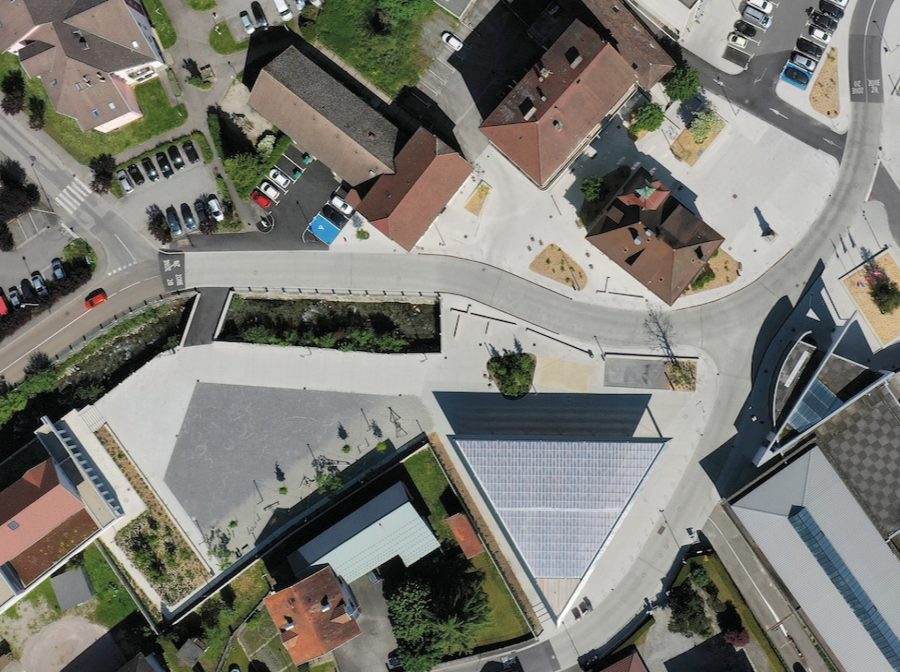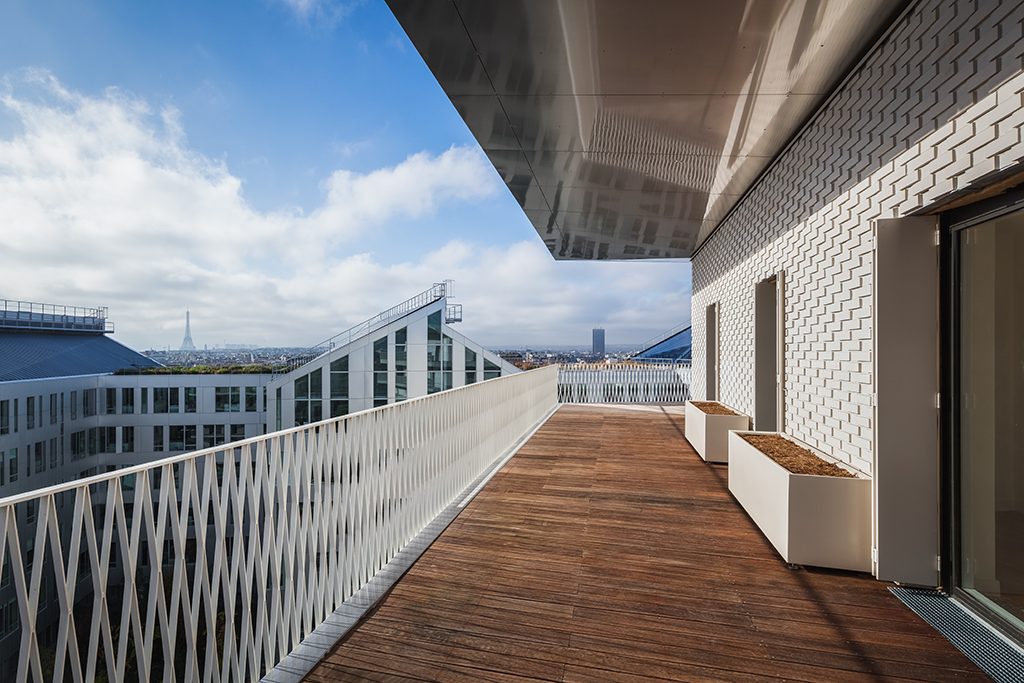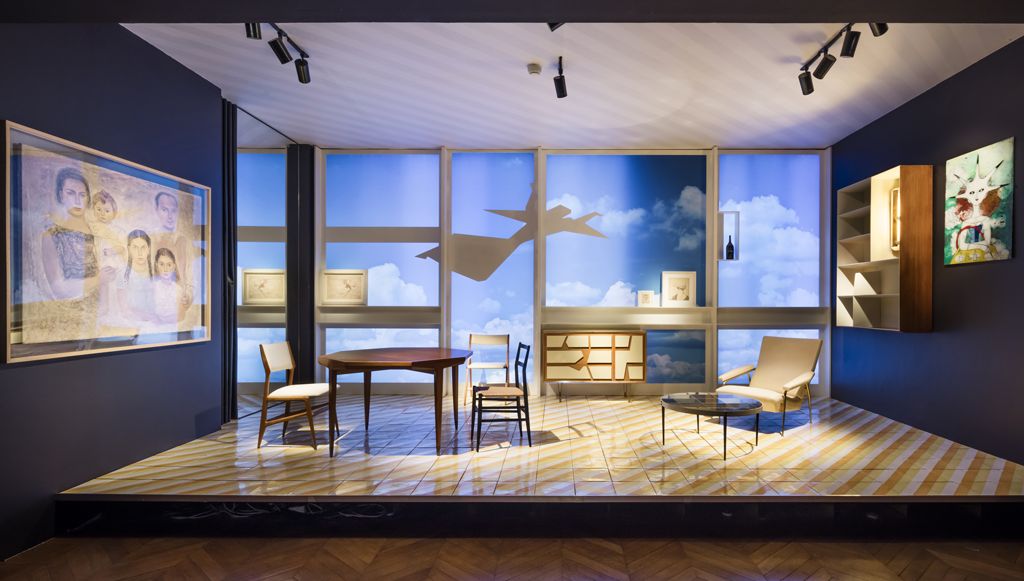Interview with Atelier Archiplein
3 questions to Marlène Leroux and Francis Jacquier (Atelier Archiplein), winners of the Transeuroparchi prize and Grand Prix du jury AMO 2023 for their project to redevelop the town centre of Scionzier (Haute-Savoie). Find out more about the 2023 AMO Awards in the AA digital booklet.
The project began with the redevelopment of a first building, an old screw-cutting factory, leading to the redevelopment of public spaces and the creation of a beautiful wooden canopy. Can you tell us how your client came to hand you this multi-layered project?
Until now, Scionzier town centre had no strong identity, being seen as a transit area for ski resorts and mountain leisure activities. People drove through Scionzier without paying any attention to it. In 2020, the perspective of renovating the Alpex screw-cutting factory, a local cultural and architectural heritage site, restored the town’s industrial history to the public consciousness and provided the impetus for the necessary, and now urgent, renovation of the entire town centre. For many years, urban development work consisted exclusively of maintaining road safety and creating parking areas.
The first project involved renovating and extending the former Alpex factory into a cultural centre. This was completely invisible because it was surrounded by a series of outbuildings and industrial units of poor value. As the project progressed and the demolitions were carried out, a new open space came to light, which helped the client to mature the project. Coinciding with the changes in the town council, a new competition was launched for the renovation of the heart of the town, with a multi-disciplinary team of contractors including civil engineers and architects.
We then submitted a proposal – unexpected on their part – for a market hall to replace the public car park. We felt that the resulting open space was far too vast and needed an urban focal point, a structuring element to transform uses. Then, given its central position in the city, questions of mobility and how the city functions led us to carry out the overall project in several stages of work over 3 years. Completed early 2023, the redevelopment of the town centre has transformed the town’s image, introduced new uses, revitalised the public space and improved the quality of life for local residents. It has also enabled Scionzier to become a new destination for cultural events (concerts, cinemas), the weekly market or the Christmas market, big second-hand markets and music festivals requiring a vast open space.

What were the main challenges you faced in this architectural and urbanproject, how did you deal with them, and how did you work with your client?
The main challenges we faced were fourfold and were always resolved smoothly and serenely, because our collaboration is based on shared values, especially regarding sustainable development and the prevalence of urban and architectural coherence.
Firstly, there were cultural challenges, such as reducing the space given to cars, a particularly sensitive issue in an urban structure where cars are omnipresent.
Secondly, all the interventions had to serve both everyday life (recreation, playgrounds, weekly market) and major regional events (festivals, fairs, Christmas markets), so we had to discuss the logistical and functional aspects very precisely in order to find the right balance between rigorously maintaining the overall project and adding logistical injunctions.
Thirdly, our multi-disciplinary team had to rise to the technical challenges that came with not only the site’s industrial past, but also the presence of the Foron, a canalised river that runs under the square and imposes a number of major constraints, particularly in terms of planting limits.
Finally, the last challenge was maintaining the general schedule and the wood supply, especially during the Covid’s periods. Here, it was largely thanks to the tenacity and reactivity of the client that the deadlines were (more or less) met.
How are you and your client going to follow up this collaboration?
First of all, we are following the life of this new town centre and supporting the necessary adjustments to the actual life of such an urban object. The municipality is now involved in the “Small Towns of Tomorrow” programme, the main objective of which is to develop its town centre into an economic and cultural hub, and we have no doubt that it will continue to “repair” its urban structure. And, of course, the quality of our exchanges and the mutual trust we’ve built up mean that we’re keen to continue working together in the future.





